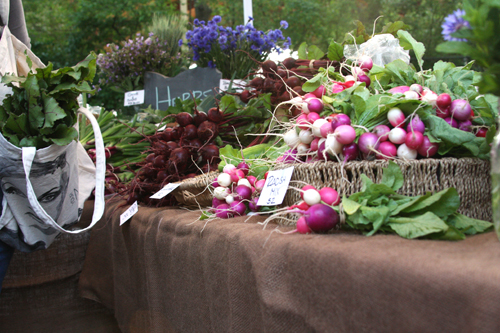Matthew Roher, chef and owner of Cha Bella restaurant in Savannah, says local is better, and he wants to connect Georgians to local producers of fine food.
“For me, it begins with the restaurant experience,” Roher said. “We take a lot of pride in using local ingredients, and we are using these to drive our menus.”
Roher saw farmers from the low country driving all over the state to sell at different markets, sometimes barely making enough money to fill their gas tanks. So, he started Farm Box Savannah in November 2009. It runs year-round and supplies over 300 customers with local produce all boxed up and includes recipes on how to prepare and enjoy it.
“We have all these incredible producers here so we started Farm Box Savannah, where I am buying from these producers every single week and giving local people the opportunity to eat this great produce,” Roher said.
Roher recently added a fresh seafood program, buying seafood from fishermen at the docks in Savannah. Roher hopes to expand the program to include local coffees, Georgia olive oil and meats.
“It would be easy, given the right structure and financial investment,” he said, “to expand the company to offer new local products.”
If more Georgians followed Roher’s lead, the state would win big.
If each of the approximately 3.7 million households in the state spent $10 per week buying produce grown in Georgia, more than $1.9 billion would flow back into the state’s economy annually, according to a report recently released by the University of Georgia College of Agricultural and Environmental Sciences Center for Agribusiness and Economic Development.
“These findings are some of the strongest demonstrations so far of what a small change in consumer behavior could mean for farmers, and for the entire state,” said Alice Rolls, executive director of Georgia Organics, who helped sponsor the study.
“Looking at the quantity of foods directly marketed in Georgia, there is a tremendous opportunity there,” said Kent Wolfe, a CAES agricultural economist who worked on the study. “Georgia’s food product sales directly to consumers accounts for a small fraction of their total sales. Farmers get to keep a larger percentage of their food dollar when they sell directly to stores, restaurants or other consumers.”
According to the 2007 Agricultural Census, Georgia farmers’ direct sales to consumers accounted for .18 percent of their total sales. Rhode Island sold 9.5 percent of its produce directly to consumers. Massachusetts sold 8.5 percent through direct sales.
“We are direct marketing such a small percentage of vegetables and melons,” Wolfe said. “We are lower than the national average by half, and making less money than average.”
In 2007 Georgia vegetable and melon farmers sold more than $5 million worth of products directly to consumers, which is 1 percent of the crops being sold directly to consumers. According to the UGA study, if Georgia vegetable, melon, fruit and nut farmers increased their direct-to-consumer sales to meet the national average of 2.2 percent, direct sales would increase to over $13 million.
“Restaurants are looking for it, retailers and homeowner want local produce, but we need to do a better job of connecting people,” Wolfe said. “Our distribution methods are still in their infancy.”








